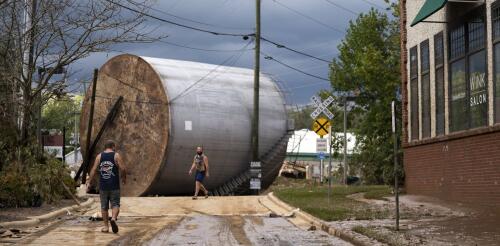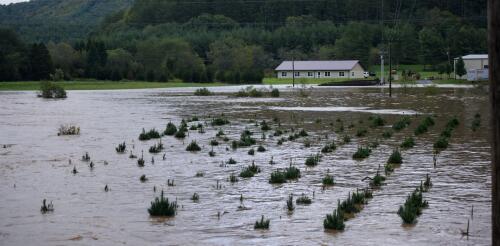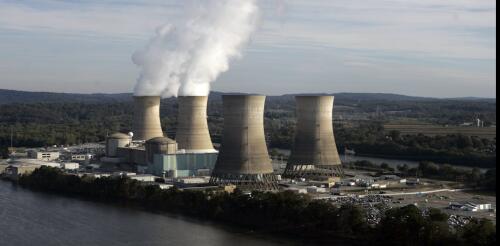Climate change
There is a new doomer narrative over artificial intelligence emerging in the background at this year’s COP meeting. This one isn’t focused on a malignant superintelligence. Instead, it is over sustainability and concerns over AI’s burgeoning energy demands. A recent study projects that by 2027, NVIDIA’s new AI servers will be consuming over 85.4 terawatt-hours annually, exceeding the energy usage of countries such as Sweden and Argentina. Research from the University of Massachusetts Amherst suggesting that training a single AI model can emit over 284 tonnes of CO2, equivalent to the lifetime emissions of five average American cars, paints a concerning picture of AI’s environmental impact. Annually, AI’s carbon footprint is approaching 1% of global emissions. AI’s energy demands have indeed increased dramatically. A Stanford study flags a 300,000-fold rise in AI systems’ power requirements sinc...
The global climate summit is well into overtime late Tuesday night in Dubai, with no deal on the meeting’s final agreement, and countries are bitterly divided over whether to call time on fossil fuels. Negotiators are scrambling last-ditch meetings to salvage more ambitious language to address the cause of the climate crisis. The latest draft of the COP28 summit’s centerpiece agreement published Monday dropped previous references to phasing out fossil fuels, stoking anger and frustration among some nations and advocates. More than 100 countries support a phase-out of fossil fuels in some form. Instead, the watered-down draft offers a list of actions that countries “could” take to reduce their planet-heating emissions, one of which is reducing the consumption and production of oil, coal and gas. An ambitious deadline set by COP28 President Sultan Al Jaber to strike a deal on a package of agreements expir...
Hundreds of industrial facilities with toxic pollutants were in Hurricane Helene’s path as the powerful storm flooded communities across the Southeast in late September 2024. Near the coast and into Georgia, Helene swept over paper mills, fertilizer factories and oil and gas storage facilities. Paper mills are among the most polluting industries on the planet – some with thousands of pounds of lead on-site from prior production practices. Florida officials reported that a retired nuclear power plant just south of Cedar Key experienced a storm surge of as much as 12 feet that inundated buildings and an industrial wastewater pond. Spent nuclear fuel stored at the site, which also flooded during Hurricane Idalia in 2023, was believed to be secure, Bloomberg reported. Further inland, the storm dumped more than a foot of rain on industrial sites in the Carolinas and Tennessee, some near waterways that quickly flooded with runoff from the mountains....
Hurricane Helene caused deadly and destructive flooding when it swept through the Southeast on Sept. 26-29, 2024. Across a broad swath of western North Carolina, where the worst flooding occurred, the amount of rainfall exceeded levels that would be expected on average only once every 1,000 years. But this wasn’t the first 1,000-year rainstorm in North Carolina this year. In mid-September, an unnamed slow-moving storm produced more than a foot of rainfall closer to the Atlantic coast. This storm inundated areas that had already been drenched by Tropical Storm Debby in August. As atmospheric scientists and state climatologists, we believe it’s important for the public to understand the risk that extreme events may occur. That’s especially true as climate change alters the conditions that create and feed storms. Here’s how scientists calculate storm probabilities, and why events like a 1,000-year storm can happen much more frequently in some places than tha...
Constellation, an energy company that provides electricity and natural gas to customers in 16 states and Washington, announced on Sept. 20, 2024, that it plans to restore and restart Unit 1 at Three Mile Island, a nuclear plant near Middletown, Pennsylvania, that was shut down in 2019. Microsoft has signed a 20-year agreement to purchase electricity generated by the plant to offset power demand from its data centers in the mid-Atlantic region. Three Mile Island was the site in 1979 of a partial meltdown at the plant’s Unit 2 reactor. The Nuclear Regulatory Commission calls this event “the most serious accident in U.S. commercial nuclear power plant operating history,” although only small amounts of radiation were released, and no health effects on plant workers or the public were detected. Unit 1 was not affected by the accident. University of Michigan nuclear engineering professor Todd Allen explains what restarting Unit 1 will involve, and why some other shu...




